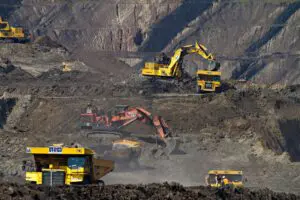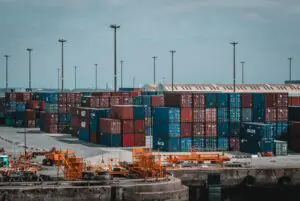Geology matters….
Although copper has been mined from a variety of mineral deposits, porphyry copper deposits are the most important source for copper, contributing more than 60% of the annual world copper production and approximately 65% of the known total copper resource. Since 1970, more than 95% of the U. S. copper production has been derived from porphyry copper deposits.
With open pit mining operations beginning at Bingham Canyon in 1906, porphyry copper deposits were the first type of metallic mineral deposit to be mined by largescale, bulk tonnage, open pit mining methods. Economies of scale and advances in technology have made it possible to profitably mine these deposits despite their relatively low ore grades.
The development of technologies for extracting metals from low-grade ores has further enhanced the economic importance of copper porphyry deposits in meeting global demand.
SIZE Matters
Costmine Intelligence tracks resource development of projects over time. Here are 15 of the largest copper porphyry resources (Measured and Indicated).
Copper Project Pipeline
According to McKinsey, global electrification could increase annual copper demand to 36.6 million tonnes by 2031, compared to the current demand of roughly 25 million tonnes. However, the consultancy firm forecasts copper supply to be around 30.1 million tonnes, leaving a gap of 6.5 million tonnes by the start of the next decade.
Exploration for new sources for copper today is critical to bring mines into operation in the future. According to one study, it takes on average 15.7 years to bring a mineral discovery into production.
Costmine Intelligence tracks the development status of projects over time to make discovering the next sources of copper easier. Currently, there are 298 copper porphyry projects not in production being tracked globally, at various stages of development.
DAta MATTERS
All this data is available through Mining Intelligence…
With 35+ years of gathering mining industry data, Costmine understands the intricacies of mining data. Our global team of experienced analysts curate data from a variety sources, putting hours of research at your fingertips in minutes.
Our platform is designed to target mining companies or properties quickly and drill down deeper into specific datasets easily. All source documents are available in a searchable library that is fully integrated on the platform.
The platform provides access to:
Enhanced Reserves and Resources
Detailed analytics into a property’s history and valuation. Analyze quantity and value progression by examining current and historical in-situ reserves and resources value, and unlimited history of property reserves and resources by commodity.
Enhanced Production
Quickly visualize current and historical production of a property or company using charts and graphs comparing ore production and metal in ore production. Compare datasets, including material mined, ore mined & milled, ore body type, and metal in ore value.
Development Studies
Analyze information from publicly released reports relating to properties from the scoping stage through feasibility. Compare datasets, including NPV, IRR & Net Cash Flow before and after tax, payback period, and operating costs and capital costs initial, sustaining, and total.
Production Costs
Gauge the health of a producing mine based on reported production costs. Compare datasets, including cash costs, production, total and all-in sustaining costs, and realized price, against commodity price to find potential opportunities.
Drill Results
Get an overview of exploration activity, identifying which geographical areas are “hot” and showing new projects based on good drill intersections to deliver on your mergers and acquisitions strategy. Search and filter data based on width, grade, grade x width, commodity, and property
Operations
Operations allow you to know the mining method and processing technology used at an existing or future mine, including mining technologies for open pit, surface and underground mining, processing technologies, leaching technologies, concentration and recovery technologies, and reagents.
Geography
Geography shows the proximity of properties to each other, existing infrastructure, and the surrounding geography. You can visualize property locations on an interactive map and download supporting data, including the average elevation, precipitation, and climate zone for each property.
Geology
Geology provides information on ore deposit type and a summary of other geological criteria for a property.





















